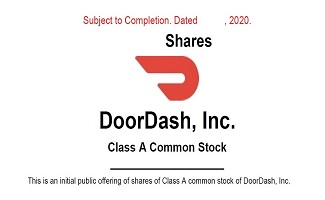On August 7, 2019, Lyft Inc. (NASDAQ: LYFT; DB: LY0) reported Q2/2019 earnings for the quarter ended June 30, 2019. Lyft had better than expected sales and an improved outlook, and investors reacted positively as the stock price increased more than 8% in next day’s trading.
Uber started trading as a public company on the New York Stock Exchange in May 2019 and Lyft started trading as a public company on the NASDAQ in March 2019 so these are only the second quarterly earnings for both companies and important barometers for their growth.
Uber Q2/2019 Results:
 Revenue increased 1.9% quarter-over-quarter to US$3.17 billion but missed S&P CapIQ consensus estimates of US$3.39 billion.
Revenue increased 1.9% quarter-over-quarter to US$3.17 billion but missed S&P CapIQ consensus estimates of US$3.39 billion.- Gross bookings growth rate was slight higher at 37%, compared with previous quarter growth of 35%.
- Loss from operations increased by over 600% quarter-over-quarter to US$5.2 billion compared with US$700 million due to:
- US$3.9 billion cost in stock based compensation attributed to payments for covenants made in Uber’s recent IPO and;
- US$2.5 billion invested in research & development as Uber stated during its IPO that it will continue to invest heavily into futuristic tech including autonomous vehicles, flying cars (known as eVTOLs) and other “technology programs”.
- Monthly Active Platform Consumers reached 100 million from previous quarter of 93 million.
- Ridesharing accounted for 79% of revenue in Q2/2019 compared with 88% year-over-year, as Uber is starting to focus and invest more into Uber Eats, its food delivery revenue stream.
- Cash and cash equivalents, including restricted cash, increased to US$13.7 billion compared with US$7.7 billion from the previous quarter, mainly attributed to receiving approximately US$8 billion from its IPO and US$0.5 billion from PayPal’s
Lyft Q2/2019 Results:
 Revenue increased 12% quarter-over-quarter to US$867.3 million beating S&P CapIQ consensus estimates of US$809.6 million.
Revenue increased 12% quarter-over-quarter to US$867.3 million beating S&P CapIQ consensus estimates of US$809.6 million.- Loss from operations increased 260% year-over-year to US$644.2 million compared with US$178.9 million due to:
- US$296.6 million in stock-based compensation and related payroll tax expenses;
- US$309 million invested in research and development; and,
- US$141.1 million related to changes to the liabilities for insurance required by regulatory agencies
- Monthly Active Rides increased 41% year-over-year to 21.8 million compared with 15.4 million.
- Cash and short-term investments increased to US$3.3 billion compared with US$2 billion from the previous year, mainly attributed to receiving US$2.3 billion from its IPO.
Even though Uber’s stock fell more than 8% on August 9, 2019 after releasing its Q2/2019 earnings, CEO Dara Khosrowshahi said that there’s “no doubt in my mind that the business will eventually be a breakeven and profitable business”. Uber expects to regain stability in 2020 and 2021 as price competition with competitor Lyft is starting to subside.
The message was similar from Lyft’s CEO Brian Roberts who said that he believes competition with Uber for price and market share has subsided, and also stated that he believes the company will break even sooner than it predicted.
As investors constantly criticize the ride-sharing industry for constant cash burning, it will be interesting to see which ride-sharing company reaches profitability first.
Below are short positions for Uber and Lyft as of July, 31, 2019.
| USD | Ticker | Stock Price | Market Cap. (M) | Shorted Shares (M) | O/S Shares (M) |
| Uber Technologies Inc. | NYSE: UBER | $40.17 | $68,000 | 16.4 | 1,700 |
| Lyft Inc. | NASDAQ: LYFT | $59.01 | $17,100 | 21.1 | 257.6 |
//
Uber Technologies Inc. (NYSE: UBER; LSE: 0A1U; DB: UT8)Headquartered in California, United States, Uber is a multinational peer to peer transportation platform and network, which include ride sharing, ride service hailing, food delivery, and bicycle sharing. Uber listed as a public company and started trading on the New York Stock Exchange in May 2019. Uber is currently trading at US$40.17 per share with a market capitalization of US$68.1 billion.
Lyft Inc. (NASDAQ: LYFT; DB: LY0)Headquartered in California, United States, Lyft is a peer-to-peer ridesharing company that operates in the United States and Canada. It listed as a public company and started trading on the NASDAQ in March 2019. LYFT is currently trading at US$59.01 with a market capitalization of US$17.1 billion.
//




